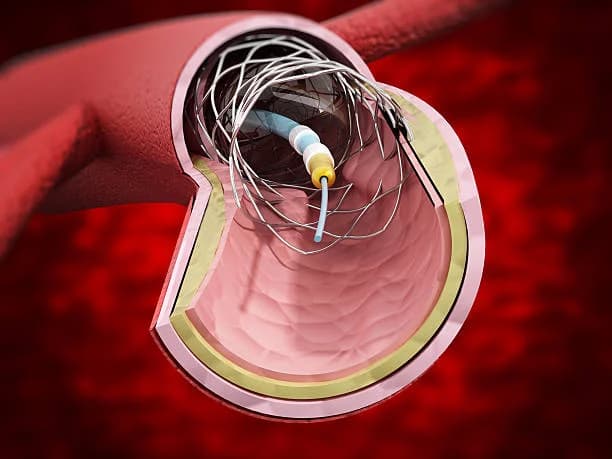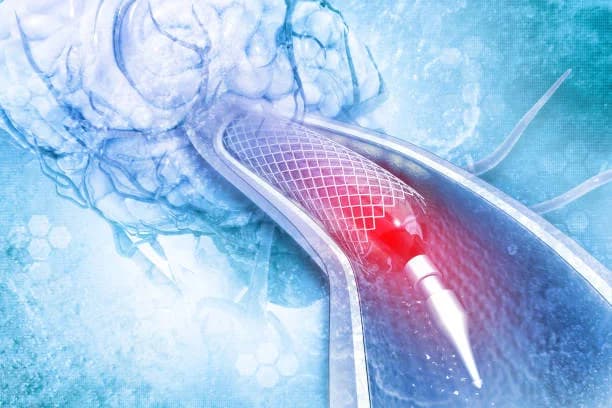Angioplasty is done to open blocked coronary arteries. During this, blood flow is returned to the heart muscle without open-heart surgery. Angioplasty can be done in an emergency setting such as a heart attack. This procedure puts a long, thin tube (catheter) into a blood vessel and guides it to the blocked coronary artery. At the tip of which, is a tiny balloon. Once the catheter is in place, the balloon is inflated at the narrowed area of the heart artery, pressing the plaque or blood clot against the side of the artery.
Why might I need angioplasty?
Angioplasty is done to restore coronary artery blood flow when the narrowed artery is in a place that can be reached in this manner. Not all coronary artery disease (CAD) can be treated with angioplasty. Your doctor will decide the best way to treat your CAD based on your circumstances.

How many types of angioplasty are done?
Balloon angioplasty
Which involves using the pressure of an inflating balloon to clear plaque that is blocking an artery. This is rarely done alone except in cases when doctors are unable to place a stent in the required position.
Stent placement in the artery
Which involves a tube, or stent, made out of wire mesh. Stents help to prevent an artery from narrowing again after angioplasty.
What are the risks of angioplasty?
Possible risks linked to angioplasty, stenting, atherectomy, and related procedures include:
Bleeding at the site where the catheter is put into the body (usually the groin, wrist, or arm)
Blood clot or damage to the blood vessel from the catheter
A blood clot within the treated blood vessel
Infection at the catheter insertion site
Abnormal heart rhythms
Heart attack
Stroke
Chest pain or discomfort
Rupture of the coronary artery or complete closing of the coronary artery, needing open-heart surgery
Allergic reaction to the contrast dye used
Kidney damage from the contrast dye

What results are expected from angioplasty?
Coronary angioplasty greatly increases blood flow through the previously narrowed or blocked coronary artery. Chest pain generally should decrease. You may be better able to exercise. Having angioplasty and stenting doesn't mean your heart disease goes away. So you need to continue monitoring your health and in case you have any symptoms similar to before your angioplasty (chest pain or shortness of breath), contact your doctor. To keep your heart healthy after angioplasty, you should:
Quit smoking
Lower your cholesterol levels
Eat a healthy diet that is low in saturated fat
Maintain a healthy weight
Control other conditions, such as diabetes and high blood pressure
Get regular exercise
Take medications as prescribed by your doctor
Conclusion
Angioplasty, a beacon of modern medical interventions, stands as a testament to the relentless pursuit of life-saving treatments. This minimally invasive procedure, which restores the flow of blood through the coronary arteries, has given countless patients a new lease on life. The success of angioplasty lies not only in its ability to alleviate symptoms such as chest pain and shortness of breath but also in its potential to prevent heart attacks and improve overall heart function. As we look to the future, the evolution of angioplasty techniques and materials, including drug-eluting stents, promises to enhance the safety and efficacy of this vital procedure. With ongoing research and technological advancements, angioplasty will continue to be a cornerstone in the fight against coronary artery disease, offering hope and health to those in need.